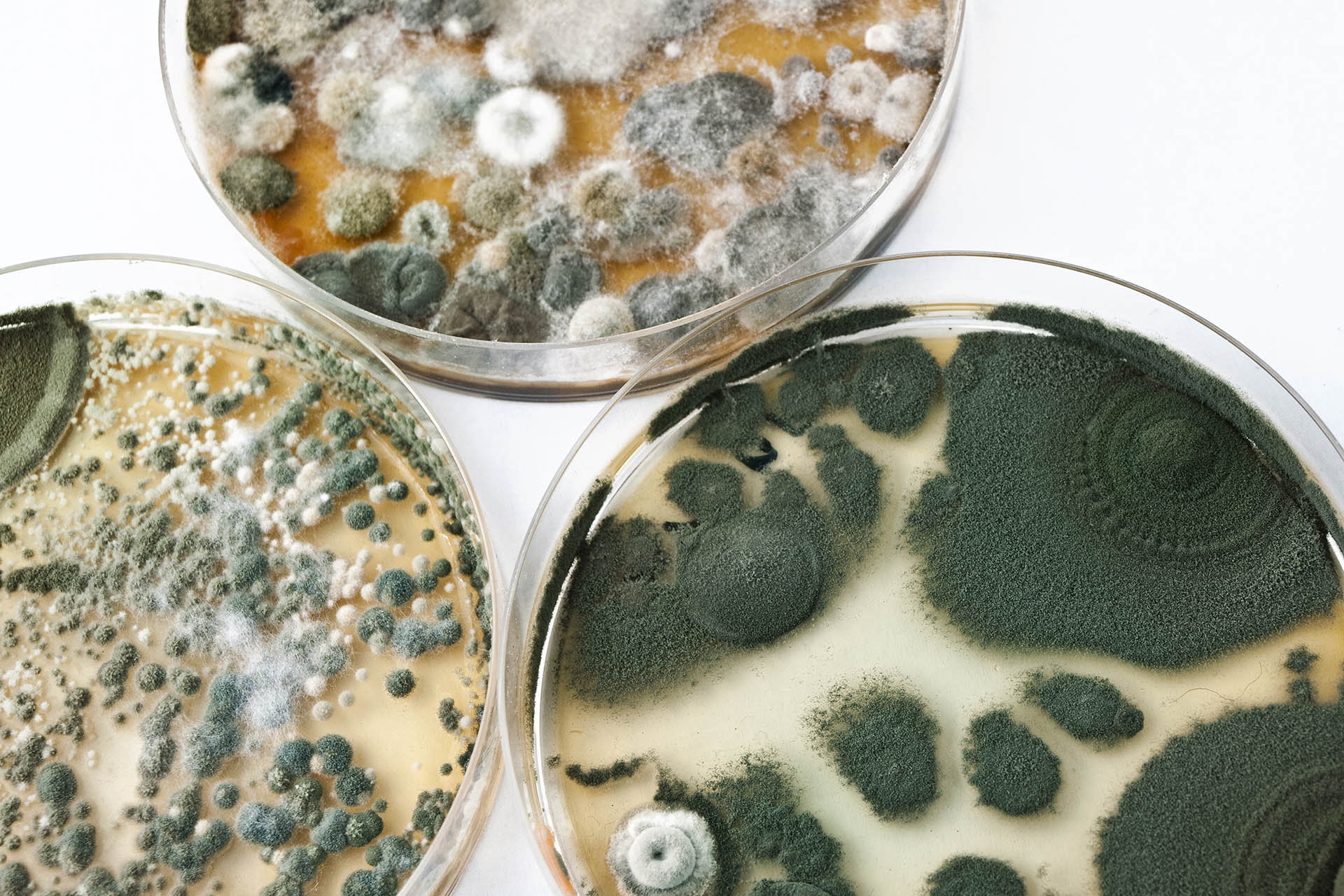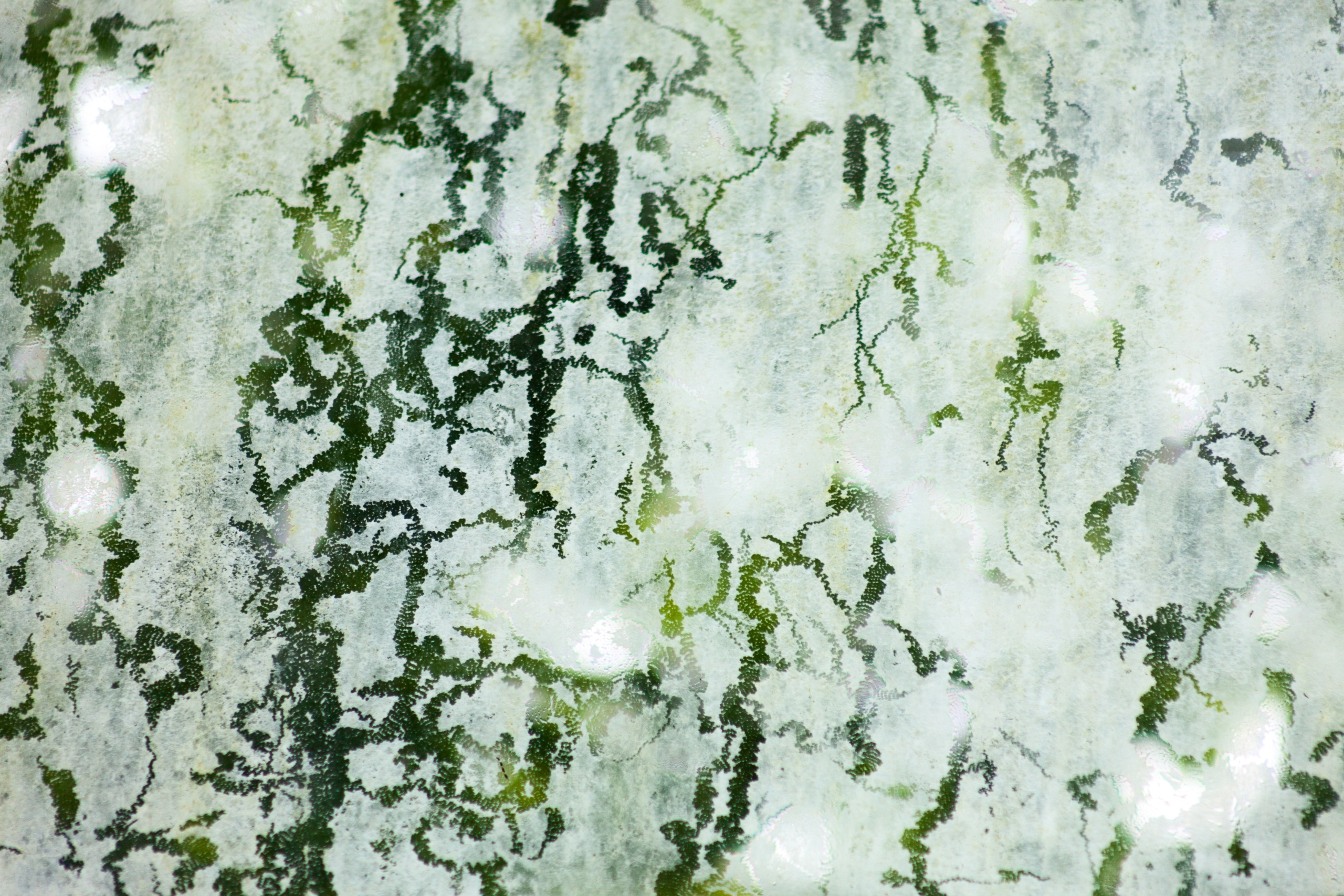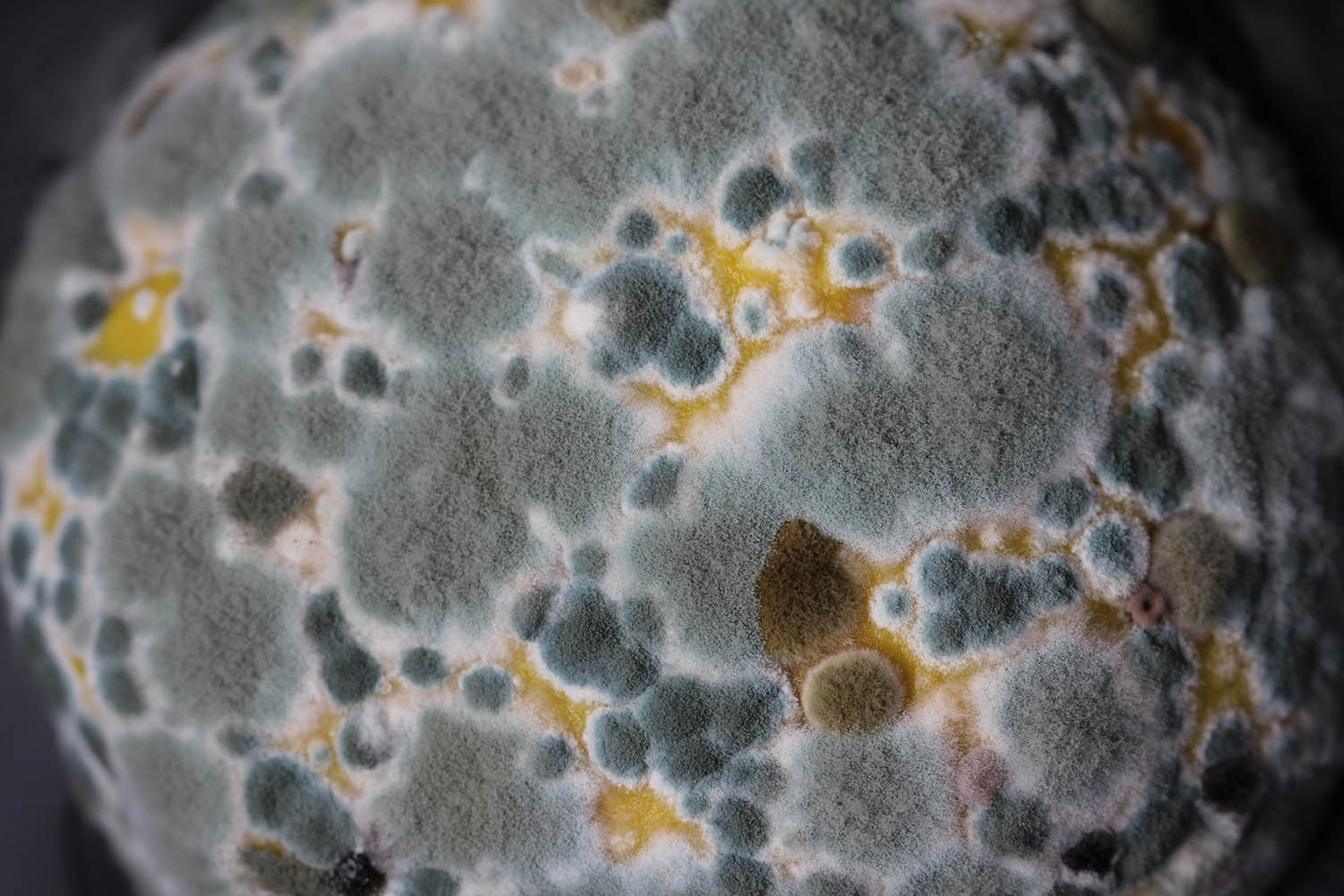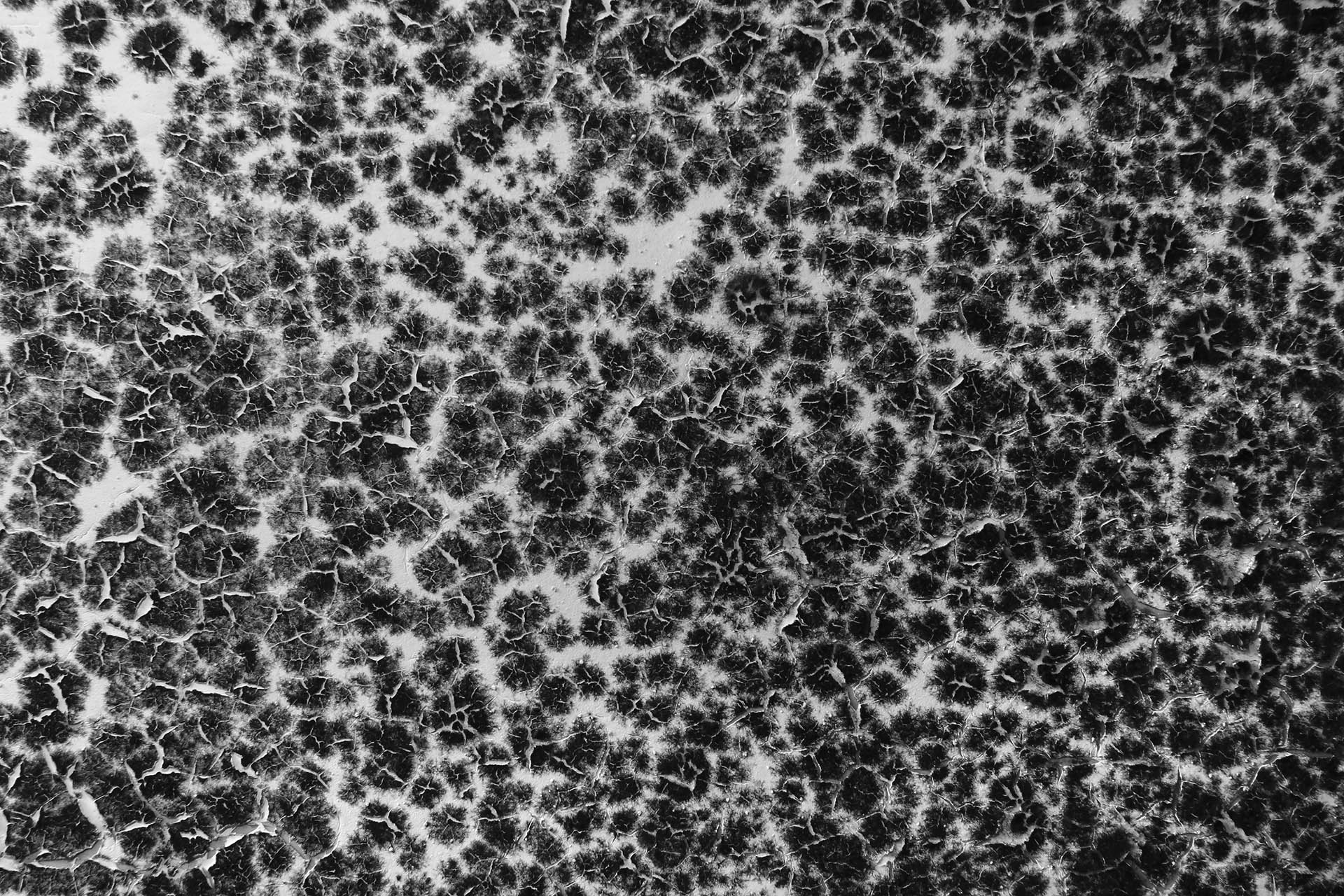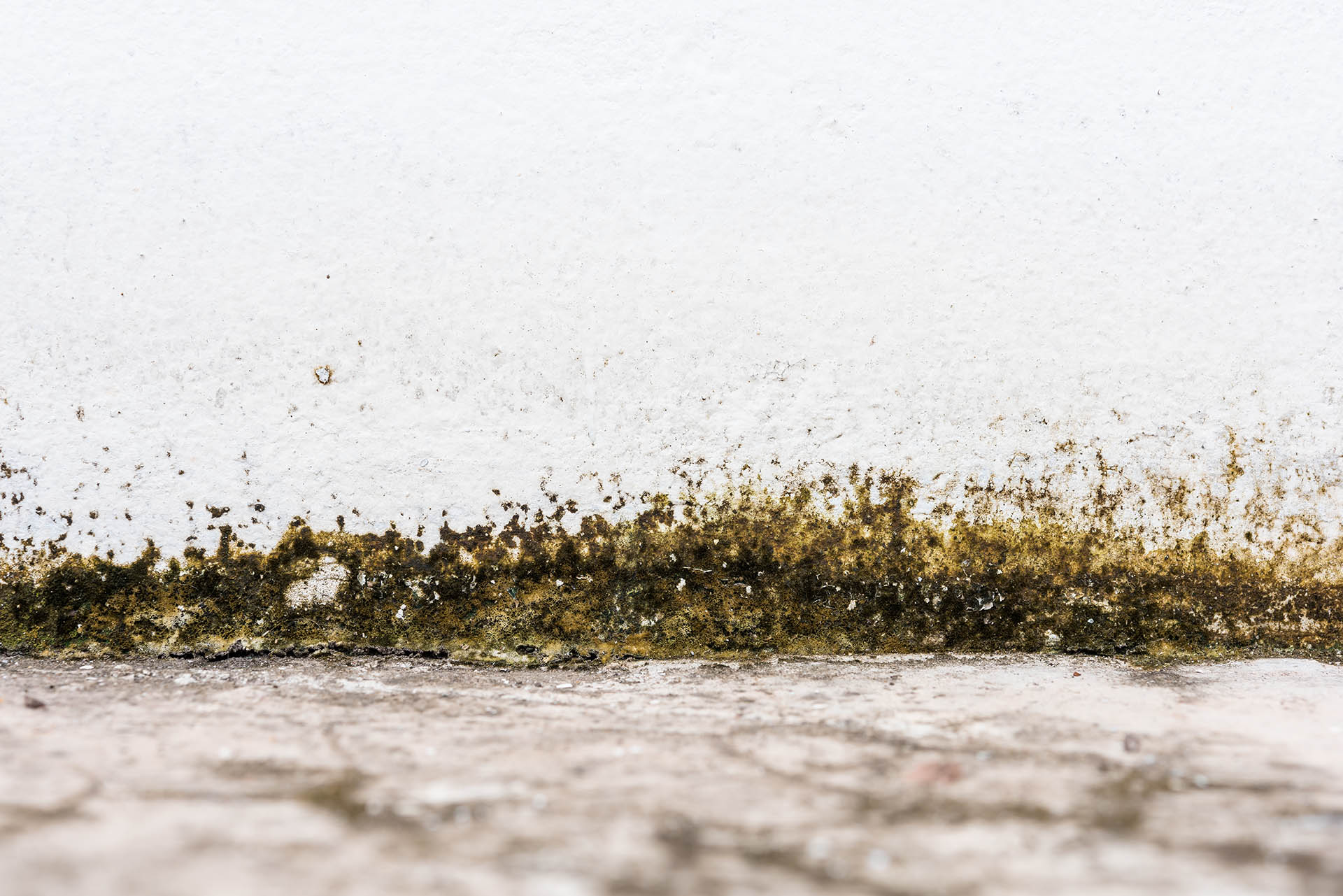Mold has been evolving for millions of years, always doing its part to keep our ecosystem healthy. Mold breaks down decaying organic materials (dead leaves, plants, trees, animals) and returns those essential nutrients to the soil. We can also thank mold for the antibiotic, penicillin, that has saved an estimated 200 million lives. And when we enjoy gourmet cheeses and fine wines? Yes—we need to give mold its due. But there is a limit to our appreciation of mold: We don’t want it in our homes, where it adversely affects our health and can seriously damage the house itself.
Mold is a fungus made up of thread-like fibers called hyphae. The hyphae grow and stretch out to nearby organisms. The next time you see a moldy bunch of grapes, for instance, notice how the white strands from the mold on one grape are reaching out to the other grapes. In addition to causing the mold to spread, the hyphae are also the mold’s means of reproduction. Spores (microscopic seeds) develop at the tips of the hyphae, become airborne, and float about looking for suitable places to establish new colonies. They don’t need to be in a hurry: They are hardy and can float around for years if need be.
The spores are looking for dim lighting, warmth, oxygen, food and moisture. Above all, they need moisture. And there is plenty of that in our homes. The majority of spores come inside through the windows, doors and ventilation system. Some might hitch a ride on our pets and our own clothes.
The spores only need a damp spot for 24 to 48 hours to settle in. Damp organic materials will keep the mold fed for a long time, including wood, wallpaper, drywall, carpets and furniture. Sometimes you will see mold on inorganic materials, such as concrete, metal, glass, even plastic. Naturally, the mold can’t consume them, but they can, and do, live quite well off of the dirt and dust on those materials. There are also some species of mold that can feed on synthetic materials, such as adhesives, pastes and paints. Enough mold given enough time can actually destroy whole sections of your house.
Without as much mold and without as much time, the mold causes a wide range of medical conditions, particularly those affecting the upper respiratory tract, from the spores floating around inside your home.
It’s easy for mold to infest your home and very difficult for you to get rid of it. See our article, “How to Prevent Mold in your Home,” for valuable advice on keeping mold outside.
